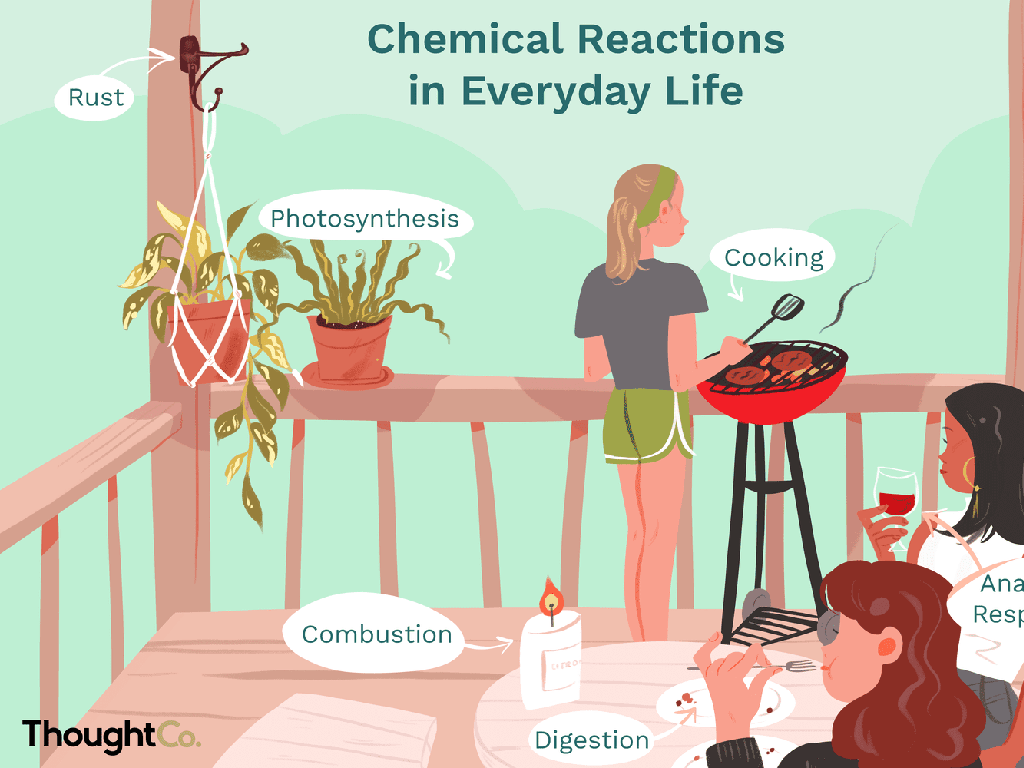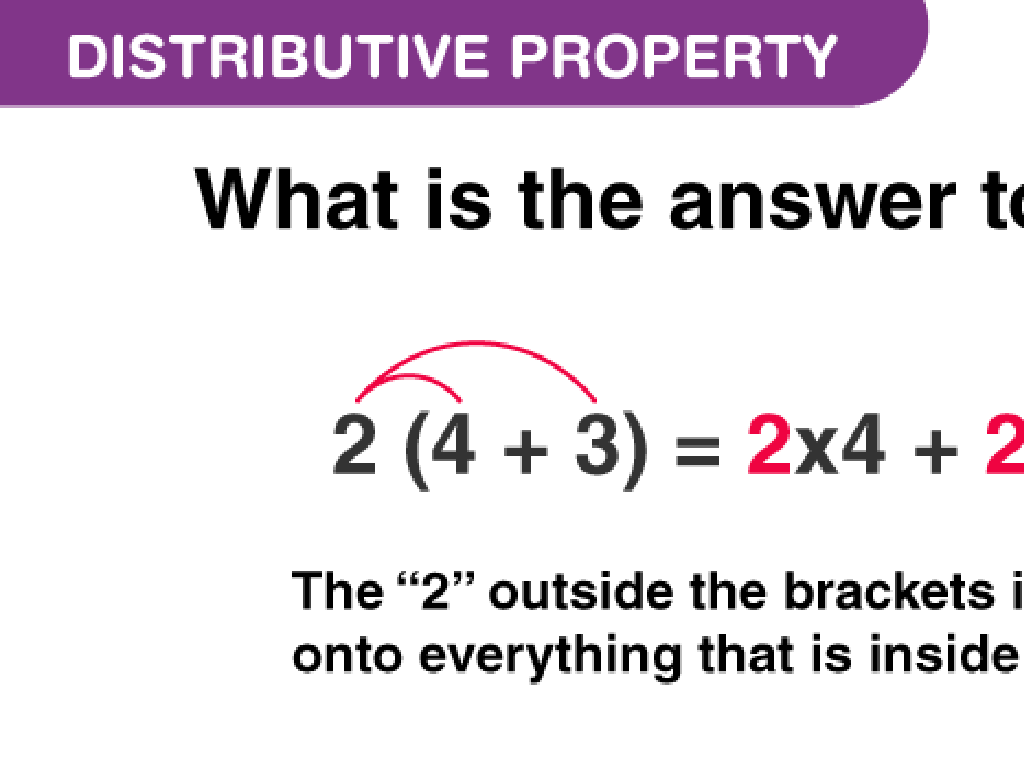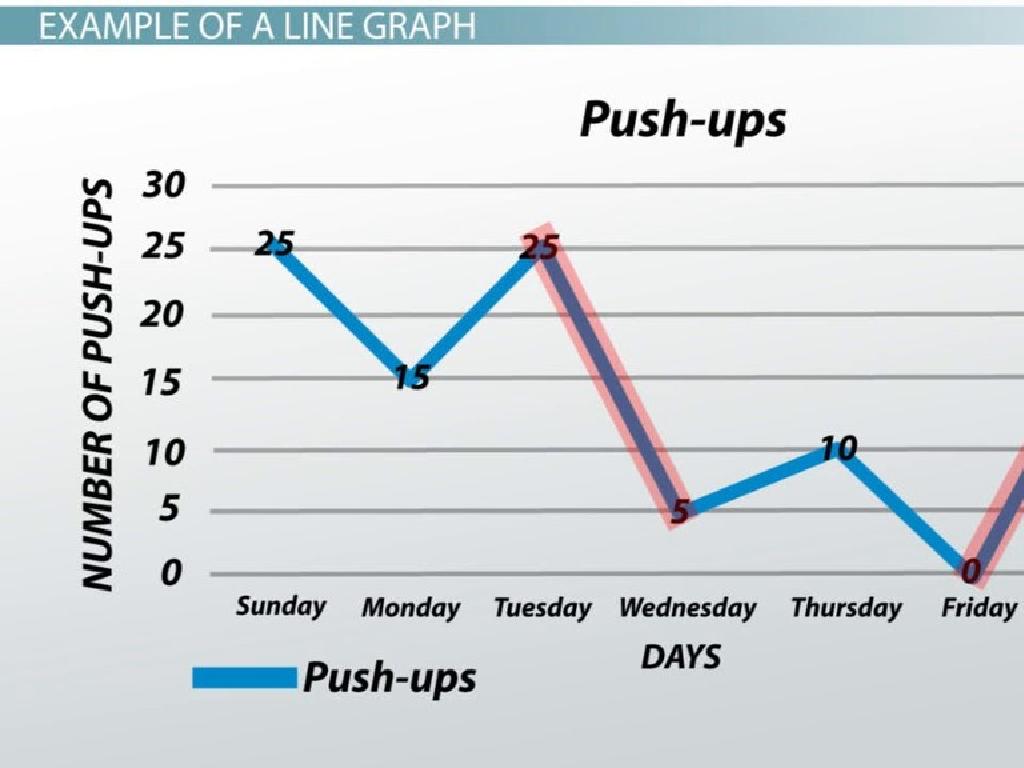How Are Substances Represented By Chemical Formulas And Models?
Subject: Science
Grade: Eighth grade
Topic: Atoms And Molecules
Please LOG IN to download the presentation. Access is available to registered users only.
View More Content
Introduction to Chemical Formulas
– Atoms and molecules basics
– Atoms are the building blocks; molecules are atoms bonded together.
– Defining chemical formulas
– Symbols and numbers representing elements and their proportions in a substance.
– Significance of chemical formulas
– They convey essential information about the composition and properties of a compound.
– Exploring examples
– Water (H2O), Carbon Dioxide (CO2), and Sodium Chloride (NaCl).
|
This slide introduces the concept of chemical formulas within the context of atoms and molecules. Begin by explaining that atoms are the smallest units of matter, and when they bond together, they form molecules. Chemical formulas are a shorthand way of representing these molecules, using the symbols from the periodic table to denote the elements involved and subscript numbers to show the ratio of atoms. Emphasize the importance of chemical formulas in communicating the composition of substances, which is crucial for understanding reactions and properties in chemistry. Provide clear examples such as water, carbon dioxide, and table salt to illustrate the concept. Encourage students to think of other common substances and their chemical formulas.
Elements and Compounds: Building Blocks of Matter
– Review elements and periodic table
– Elements are pure substances, represented by symbols on the periodic table.
– Introduction to compounds
– Compounds are substances formed when two or more elements chemically combine.
– How elements form compounds
– Elements bond in specific ratios to create compounds, following the rules of chemistry.
– Significance of chemical formulas
– Chemical formulas represent the types and numbers of atoms in a compound.
|
Begin with a quick review of elements and their organization in the periodic table, emphasizing the unique symbol that represents each element. Introduce the concept of compounds, explaining that they are substances formed by the chemical combination of two or more elements. Discuss how elements combine in fixed ratios to form compounds, and how this process involves the making and breaking of chemical bonds. Highlight the importance of chemical formulas in representing compounds, as they convey the precise composition of the compound, showing the types and numbers of atoms involved. Use examples like H2O for water and CO2 for carbon dioxide to illustrate how chemical formulas are used in practice.
Writing Chemical Formulas
– Elements and their symbols
– Each chemical element has a unique symbol, e.g., H for Hydrogen, O for Oxygen.
– Understanding subscripts and coefficients
– Subscripts show how many atoms of each element are in a molecule, coefficients show how many molecules.
– Examples of chemical formulas
– H2O represents water, CO2 represents carbon dioxide.
– Practice writing formulas
|
This slide introduces the basic components of chemical formulas, which are essential for representing substances in chemistry. Start by explaining that each element on the periodic table has a unique one or two-letter symbol. Then, clarify the role of subscripts in indicating the number of atoms of each element in a molecule and coefficients in showing the number of molecules present. Provide simple examples like water (H2O) and carbon dioxide (CO2) to illustrate these concepts. Encourage students to practice writing chemical formulas by combining symbols, subscripts, and coefficients to represent different compounds.
Molecular Models: Visualizing Compounds
– Visual aids for compound structure
– Compare ball-and-stick to space-filling
– Ball-and-stick show bonds clearly, space-filling show actual space occupied
– Construct a water molecule model
– Use 2 hydrogen (white) balls, 1 oxygen (red) ball, and sticks to represent bonds
– Understand molecular geometry
|
This slide introduces students to the concept of molecular models as a way to visualize the structure of compounds. Emphasize the difference between ball-and-stick models, which highlight the bonds between atoms, and space-filling models, which are more realistic in terms of the space each atom occupies. Guide students through building a model of a water molecule, H2O, using common color conventions (white for hydrogen, red for oxygen) and sticks to represent the bonds. This hands-on activity will help students grasp the concept of molecular geometry and the spatial arrangement of atoms within a molecule.
Interpreting Chemical Formulas
– Significance of subscripts
– Subscripts tell us the number of atoms of each element in a molecule, e.g., H2O has two hydrogen atoms.
– Calculating molecular mass
– Add the atomic masses of all atoms in the molecule to find molecular mass.
– Ratio of elements in compounds
– The ratio can be found by comparing the subscripts of each element in the formula.
– Practice interpreting formulas
|
This slide introduces students to the basics of interpreting chemical formulas. Start by explaining that subscripts in chemical formulas represent the number of atoms of each element present in a molecule. For example, in water (H2O), the ‘2’ is a subscript indicating there are two hydrogen atoms for every one oxygen atom. Next, guide students on how to calculate the molecular mass by adding the atomic masses of each atom in the molecule, which can be found on the periodic table. Then, discuss how to determine the ratio of elements in a compound by looking at the subscripts. For instance, in carbon dioxide (CO2), the ratio of carbon to oxygen is 1:2. Conclude with practice problems where students interpret various chemical formulas to solidify their understanding.
Complex Chemical Formulas
– Understanding polyatomic ions
– Groups of atoms that behave as a unit with a charge, e.g., NO{, SO²{
– Writing formulas for ionic compounds
– Combine cations and anions based on charge balance, e.g., Naz + Cl{ NaCl
– Practice with complex formulas
– Use examples like Ca(NO) to apply knowledge
– Recognizing patterns in formulas
– Look for repeating units and charge balance in formulas
|
This slide introduces students to the concept of polyatomic ions, which are clusters of atoms that carry a charge, and how they are represented in chemical formulas. Students will learn the rules for writing chemical formulas for ionic compounds, which involve combining positively charged ions (cations) with negatively charged ions (anions) in a way that the overall charge is balanced. The practice with complex formulas will help students become familiar with the process and recognize patterns, such as the need for charge balance and the presence of repeating units. Encourage students to work through several examples to solidify their understanding.
Chemical Formulas in Our World
– Common chemicals and formulas
– H2O for water, NaCl for table salt
– Chemical formulas in medicine
– Aspirin (C9H8O4) reduces pain, fever
– Formulas in food and nutrition
– Nutritional info, like C6H12O6 for glucose
– Understanding molecular models
|
This slide aims to show students the prevalence of chemical formulas in everyday life. Start by discussing common chemicals like water (H2O) and table salt (NaCl), highlighting how these simple representations convey a wealth of information about the substances’ composition. Move on to the role of chemical formulas in medicine, using aspirin as an example to show how a formula represents the compound’s molecular structure and its implications for health. In food and nutrition, explain how chemical formulas are used to describe nutrients, such as glucose (C6H12O6), and how this relates to energy and diet. Conclude by emphasizing the importance of understanding molecular models to visualize the three-dimensional arrangement of atoms in a molecule, reinforcing the connection between chemical formulas and physical reality.
Class Activity: Create Your Own Compound
– Build a model using molecular kits
– Write the compound’s chemical formula
– Use the model to determine the ratio of atoms
– Share your model and formula
– Explain your thought process to the class
– Discuss the representation accuracy
– Compare the model to the actual chemical structure
|
This activity is designed to help students understand the relationship between molecular models and chemical formulas. Provide molecular model kits to the students and assign them a specific compound to build. Once they have constructed their models, guide them to write the chemical formula that corresponds to their model. Encourage students to share their models and formulas with the class to foster a collaborative learning environment. Discuss with the class how these models represent actual compounds and the importance of accuracy in representing substances. Possible compounds for the activity could include water (H2O), carbon dioxide (CO2), methane (CH4), and salt (NaCl). This hands-on experience will reinforce their understanding of how chemical formulas are derived from molecular structures.






